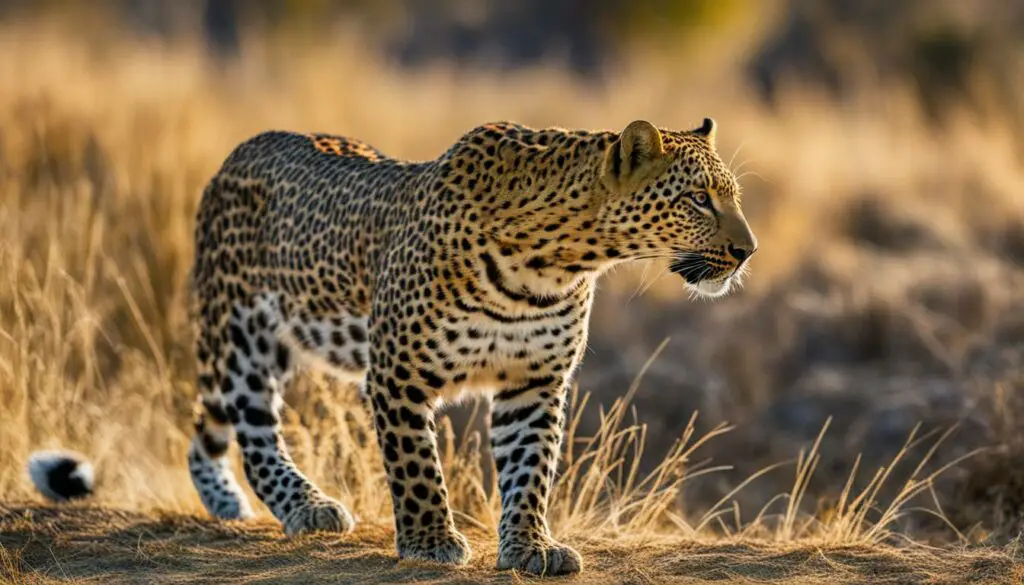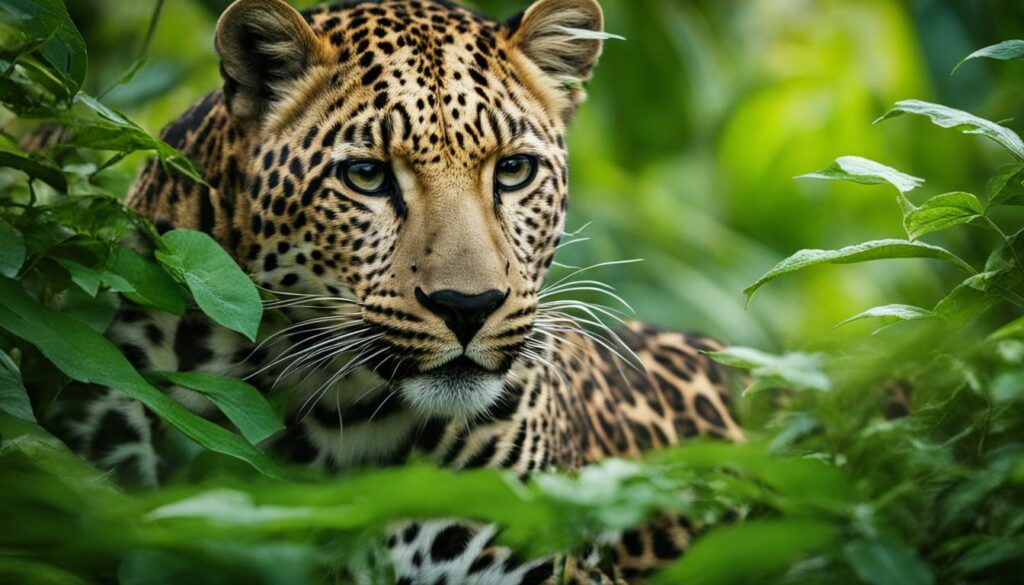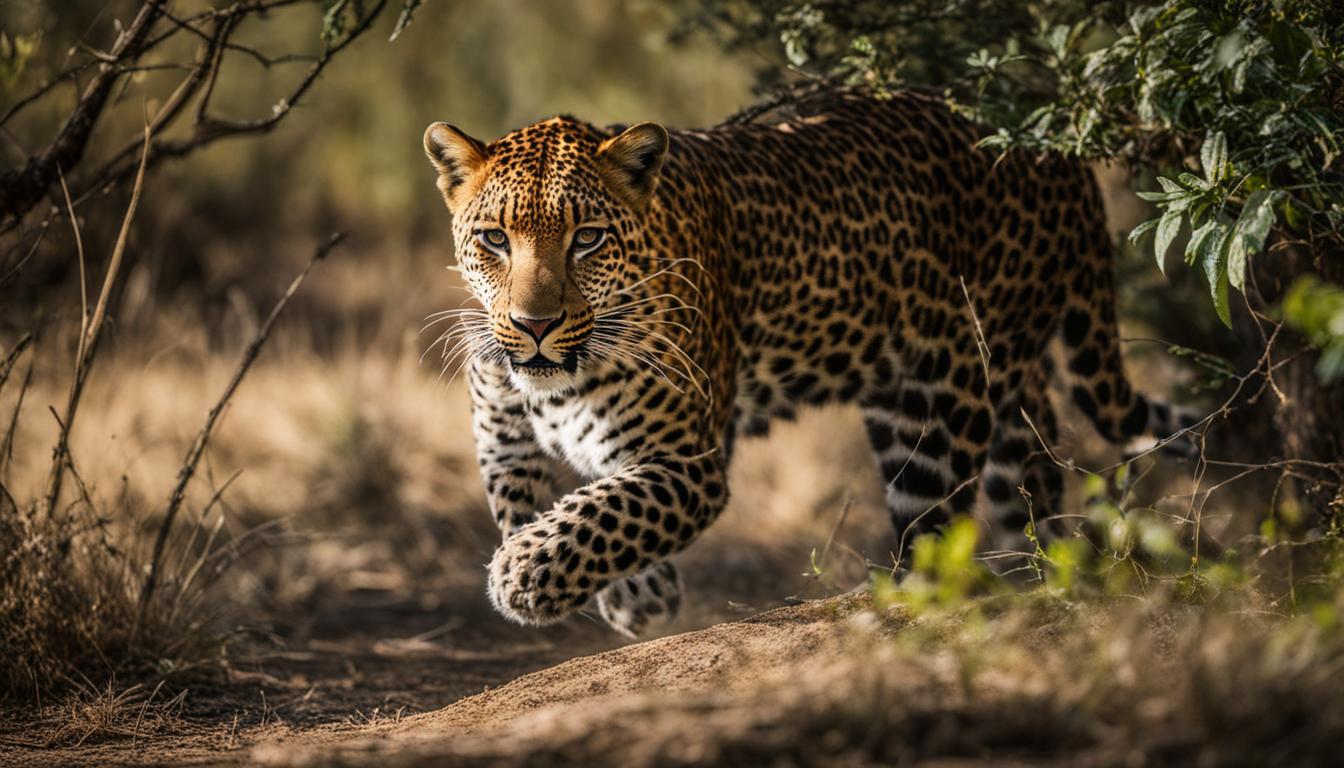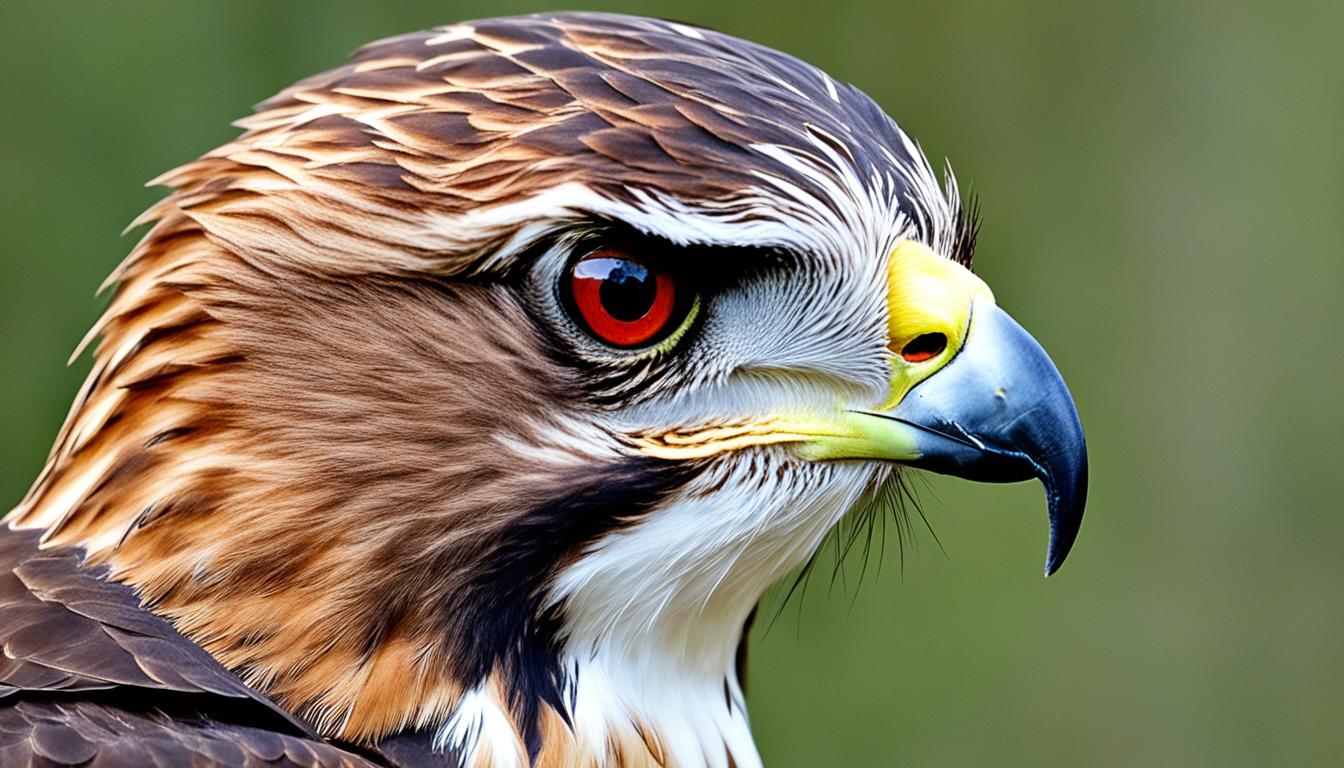Leopards are fascinating creatures with unique behaviors and adaptations that allow them to thrive in various habitats. Understanding leopard behavior, characteristics, and habitat is crucial for their conservation and the preservation of biodiversity. In this article, we will delve into the captivating world of leopard behavior, exploring their habits in the wild and in captivity.
We will uncover their social structure, modes of communication, territoriality, hunting strategies, and adaptations for survival. From their solitary nature to their powerful abilities, leopards have evolved to become efficient predators in their ecosystems.
However, their population faces numerous threats, including habitat loss and illegal trade. Conservation efforts play a vital role in protecting leopards and ensuring their long-term survival. By understanding leopard behavior and supporting conservation initiatives, we can safeguard these magnificent creatures for future generations. Join us as we dive into the world of leopards and explore the importance of their conservation.
Leopard Characteristics and Habitat
Leopards, belonging to the Panthera genus, are the smallest among the big cat species, with females weighing between 46 to 132 pounds and males weighing between 80 to 165 pounds. With their wide range spanning across Africa, parts of the Middle East, and Asia, leopards display remarkable adaptability, thriving in various habitats such as forests, savannas, grasslands, deserts, and mountainous regions.
Their distinct coat colors range from tawny or light yellow to darker, reddish-orange shades, adapting to their specific habitat. To blend with their surroundings, leopards have irregular spots known as rosettes all over their body, providing them with effective camouflage.
| Leopard Characteristics | Leopard Habitat |
|---|---|
| Smallest of the big cat species | Wide range across Africa, Middle East, and Asia |
| Females weigh between 46 to 132 pounds | Adaptable to forests, savannas, grasslands, deserts, and mountainous regions |
| Males weigh between 80 to 165 pounds | Coat colors range from tawny or light yellow to darker, reddish-orange shades |
| Distinct coat patterns with rosettes | Camouflage in their specific habitat |
Leopards are one of the most adaptable and visually stunning big cats, showcasing a remarkable combination of strength and beauty.
Leopard Diet and Hunting Strategies
Leopards are renowned for their adaptability when it comes to their diet. As carnivores, their menu includes a wide range of prey species, showcasing their remarkable hunting skills. From antelopes and primates to warthogs and even fish, leopards have a diverse palate. They have also been observed hunting birds, demonstrating their agility and ability to capture agile prey.
One striking characteristic of leopards is their preference for solitary hunting. They are primarily nocturnal, utilizing the cover of darkness to their advantage. Their stealth and patience allow them to stalk their prey undetected, relying on their excellent night vision to strike with precision. Once successful, leopards often carry their kill up into trees, keeping it safe from scavengers and other predators.
Leopards are incredible climbers and are capable of leaping impressive distances. Their climbing abilities enable them to access elevated vantage points, aiding in the detection of prey. The ability to traverse trees also provides them with an escape route and reduces the risk of losing their kill to competitors.
“Leopards are not only skilled hunters, but also fascinating creatures that have adapted to various hunting scenarios. Their incredible agility, strength, and stealth make them formidable predators in their ecosystems.”
| Prey Species | Hunting Technique |
|---|---|
| Antelopes | Pounce and suffocate |
| Warthogs | Ambush and bite the throat |
| Primates | Stealthy approach and attack from above |
| Birds | Leap and catch in mid-air |
| Fish | Snatch from water surfaces |
Leopards’ hunting strategies and ability to adapt to their surroundings have allowed them to thrive in a variety of habitats. Their remarkable skills and versatile diet contribute to their success as elusive predators, ultimately shaping their behavior in the wild.

Leopard Social Structure and Communication
Leopards, known for their solitary nature, have a social structure that is both intriguing and adaptable. While they typically prefer to live alone, leopards can coexist peacefully with others as long as there is enough food and space available. Males do not engage in territorial fights when resources are abundant, marking their territories with urine and claw marks instead. These markings serve as communication signals to other leopards, providing information about their presence and boundaries.
Leopards also utilize vocalizations to communicate with each other. They make a range of sounds, including growls, hisses, and roars, which help convey different messages in various situations. These vocalizations serve as a means of establishing dominance, attracting mates, and warning potential threats. Additionally, leopards use body language to communicate, with subtle behaviors such as tail flicking and ear movements playing a role in their social interactions.
Despite their preference for solitude, leopards have demonstrated remarkable adaptability in their social behavior. In areas with higher prey density, they may tolerate each other’s presence, forming temporary social groups. This flexibility allows leopards to navigate a changing environment and adjust their behavior accordingly.
Leopard Social Structure
The social structure of leopards can vary depending on factors such as resource availability and population density. In areas of low prey density, leopards are more likely to establish and defend larger territories, resulting in lower population densities. In contrast, in areas with abundant prey, leopards can tolerate each other’s presence, leading to higher population densities and overlapping territories.
However, when resources become scarce, competition for food and territory intensifies, and conflicts between leopards may arise. These conflicts can involve vocal displays, physical confrontations, and even mating disputes. While territorial disputes are relatively rare, they can have a significant impact on the social structure and behavior of leopards.
In conclusion, leopards have a unique social structure and communication system that allows them to navigate their environments effectively. Their adaptability and flexibility in social interactions contribute to their survival and success as a species.
Leopard Territoriality and Adaptations
Leopards are known for their territorial nature and their ability to adapt to diverse environments. Understanding their territorial behavior and adaptations is crucial to appreciating their survival strategies in the wild. These magnificent creatures mark their territories with urine and claw marks on trees, sending clear signals to other leopards in the area.
Leopard Territorial Behavior
Leopards are highly territorial animals, defending their territories from intruders. Male leopards may engage in territorial fights if their ranges overlap, but peaceful coexistence is possible when there is enough space and resources available. Their territorial behavior ensures that they have access to sufficient food and mates. By marking their territories, leopards establish boundaries and communicate their presence to potential competitors.
Adaptations for Survival
Leopards have several remarkable adaptations that contribute to their survival in different habitats. Their excellent climbing and leaping abilities enable them to effectively hunt prey and escape potential threats. With sharp claws and powerful jaws, they can catch and kill their prey with precision. These physical adaptations, combined with their keen senses, make leopards highly efficient predators in their ecosystems. Furthermore, their beautiful rosette patterns on their coats provide camouflage, helping them blend seamlessly into their surroundings and remain undetected by potential prey or predators.
Table: Leopard Adaptations
| Adaptation | Description |
|---|---|
| Agility and strength | Leopards’ climbing and jumping abilities aid in hunting and escaping threats. |
| Sharp claws and powerful jaws | Leopards use their claws and jaws to catch and kill prey efficiently. |
| Camouflage | Their rosette patterns on their coats provide excellent camouflage, helping them blend into their surroundings. |
| Keen senses | Leopards have acute senses of sight, smell, and hearing, allowing them to locate prey and detect potential threats. |
Leopards’ territorial behavior and physical adaptations are integral to their survival strategies. Understanding these aspects not only provides insights into their behavior but also highlights the importance of preserving their habitats and ensuring their long-term survival in the wild.
Leopard Conservation Efforts
Leopards are facing numerous threats to their survival, making conservation efforts vital for their long-term existence. Organizations, wildlife parks, and governments around the world are working together to protect these magnificent creatures and the habitats they depend on. By understanding the challenges they face and taking action, we can ensure a future where leopards continue to thrive.
One of the key conservation strategies is focused on habitat protection. This involves preserving and restoring leopard habitats, ensuring they have enough space and resources to roam and hunt. It also involves creating protected areas where leopards can live without the threat of habitat destruction or encroachment from human activities.
Leopards play a crucial role in maintaining the balance of ecosystems as top predators. Their conservation is not only important for their own survival but also for the overall health and biodiversity of their habitats.
Reducing human-wildlife conflict is another critical aspect of leopard conservation. This involves implementing measures to minimize conflicts between leopards and local communities, such as building predator-proof enclosures to protect livestock and promoting sustainable agricultural practices. Educating communities about the importance of coexistence and providing alternative livelihood options can help reduce human-wildlife conflict and ensure the safety of both leopards and humans.
Combating illegal trade is also crucial for leopard conservation. The commercial trade in leopard fur, claws, and other body parts contributes to the decline in leopard populations. Strict enforcement of laws and regulations, along with raising awareness about the consequences of wildlife trafficking, are essential for curbing this illegal trade and protecting these endangered animals.
Conservation Efforts at a Glance
| Conservation Effort | Description |
|---|---|
| Habitat Protection | Preserving and restoring leopard habitats to provide sufficient space and resources for their survival. |
| Reducing Human-Wildlife Conflict | Implementing measures to minimize conflicts between leopards and local communities, such as predator-proof enclosures and sustainable agricultural practices. |
| Combating Illegal Trade | Enforcing laws and raising awareness to prevent the illegal trade of leopard fur, claws, and other body parts. |
| Monitoring and Research | Conducting scientific studies and monitoring programs to better understand leopard populations and behavior, enabling informed conservation strategies. |
| Public Awareness and Education | Raising public awareness about leopard conservation, their ecological importance, and the need for sustainable practices to ensure their survival. |
Through these concerted efforts, we can protect the future of leopards and the ecosystems they inhabit. By supporting conservation initiatives, advocating for stricter laws, and spreading awareness, we can make a difference in preserving these magnificent creatures for generations to come.

The Importance of Leopard Conservation
Leopards are not only fascinating creatures but also play a crucial role in maintaining the balance of their ecosystems. Their conservation is vital not only for their survival but also for the preservation of biodiversity. By understanding leopard behavior and supporting conservation efforts, we can ensure the continued existence of these magnificent cats for future generations to appreciate and admire.
Leopard conservation is imperative due to the numerous threats they face. Habitat loss, human-wildlife conflict, and poaching pose significant challenges to their survival. In order to protect leopards and their habitats, conservation organizations, wildlife parks, and governments have implemented various measures. These efforts include monitoring and surveying programs to better understand leopard populations and their behaviors.
By raising awareness about leopard conservation, we can contribute to the preservation of this species. Supporting sustainable practices and advocating for stricter laws against illegal trade are crucial steps in safeguarding leopards and their habitats. Let us come together to protect and celebrate the incredible world of leopard behavior, ensuring that these iconic creatures continue to roam the wild and inspire awe and respect.
| Threats to Leopard Conservation | Conservation Efforts |
|---|---|
| Habitat loss | Implementation of protected areas and habitat corridors |
| Human-wildlife conflict | Development of community-based conservation programs |
| Poaching | Strengthening law enforcement and anti-poaching efforts |
| Illegal trade | Advocacy for stricter regulations and penalties |
“Leopards are an important part of our natural heritage and their conservation is essential to maintaining the health of ecosystems. By preserving their habitats and reducing human-wildlife conflict, we can ensure that these majestic cats continue to thrive in the wild.”
The Role of Leopards in Ecosystems
Leopards, as top predators, play a crucial role in regulating prey populations. By controlling the population of herbivores, they help maintain a balanced ecosystem. This, in turn, has cascading effects on vegetation and other species within the food chain. Additionally, leopards act as indicators of ecosystem health. Their presence or absence can indicate the overall well-being of an ecosystem.
Key Takeaways:
- Leopard conservation is vital for the preservation of biodiversity.
- Threats to leopard conservation include habitat loss, human-wildlife conflict, poaching, and illegal trade.
- Conservation efforts involve the implementation of protected areas, community-based programs, law enforcement, and advocacy for stricter regulations.
- Leopards play a crucial role in maintaining the balance of ecosystems by regulating prey populations.
Conclusion
Leopards are truly remarkable creatures, with their unique behavior and stunning adaptations allowing them to thrive in diverse habitats. Understanding their behavior, social structure, hunting strategies, and adaptations is essential for their conservation and the preservation of biodiversity. It is crucial that we support conservation efforts focused on habitat protection, reducing human-wildlife conflict, and combating illegal trade to secure a future for these magnificent cats.
By valuing leopard behavior and working towards their conservation, we can ensure that these iconic species continue to roam the wild and inspire awe and respect. Through raising awareness and promoting sustainable practices, we can contribute to the continued existence of leopards and their habitats for future generations to appreciate and admire. Together, we can protect and celebrate the incredible world of leopard behavior.
So let us join hands in preserving the rich biodiversity that leopards contribute to. By safeguarding their habitats and supporting conservation initiatives, we can ensure the survival of leopards for generations to come. The fascinating behavior of leopards deserves our attention and protection, as they play a vital role in maintaining the delicate balance of our ecosystems. Together, we have the power to make a difference in the conservation of these majestic creatures.
Do Leopards’ Behavior Differ in the Wild and in Captivity Affect Their Speed and Agility?
Leopards running agility analysis shows that their behavior differs in the wild versus captivity. In the wild, leopards rely on their speed and agility for hunting and survival, while in captivity, they may not exhibit the same level of athleticism. Understanding these differences is crucial for conservation and animal welfare efforts.
FAQ
How do leopards behave in the wild and in captivity?
Leopards have different behaviors depending on their environment. In the wild, they are solitary animals, marking territories and communicating through vocalizations. In captivity, their behavior can be influenced by their surroundings and interactions with humans.
What are the characteristics of leopards and their habitat?
Leopards are the smallest of the large cats and have distinctive rosettes on their coats for camouflage. They inhabit a wide range of habitats, including forests, savannas, grasslands, deserts, and mountainous regions.
What do leopards eat and how do they hunt?
Leopards are carnivores with a diverse diet that includes prey such as antelopes, primates, rodents, and fish. They are excellent climbers and stealth hunters, using their agility and strength to catch and kill their prey.
How do leopards socialize and communicate?
Leopards are generally solitary animals, but they can coexist peacefully with other leopards if there is enough space and food. They mark their territories with urine and claw marks, and also use vocalizations like growls and roars to communicate with each other.
How do leopards establish and defend their territories?
Leopards are territorial animals and defend their territories from other leopards. They use urine marking, claw marks, and vocalizations as communication signals. Males may fight over territory when resources are scarce, but peaceful coexistence is possible when there is enough space and food.
What adaptations do leopards have for survival?
Leopards have adaptations that help them thrive in their habitats. Their climbing and leaping abilities aid in hunting and avoiding threats. They also have sharp claws, powerful jaws, and rosette patterns on their coats for camouflage.
What conservation efforts are being made to protect leopards?
Conservation organizations, wildlife parks, and laws like the U.S. Endangered Species Act are working to protect leopards and their habitats. Programs for monitoring and surveying leopard populations have been implemented to better understand their behaviors and populations.
Why is leopard conservation important?
Leopards play a vital role as top predators in their ecosystems, helping to control prey populations and maintain a balanced ecosystem. Conserving leopards is not only essential for their survival, but also for the preservation of biodiversity.











